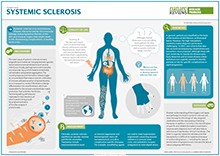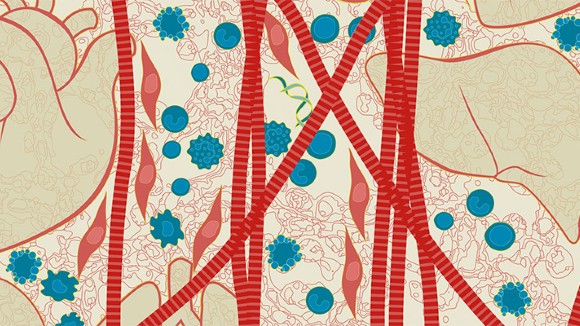PrimeView
 This PrimeView from Nature Reviews Disease Primers summarizes the mechanisms, diagnosis and management of Systemic sclerosis. For further details see the accompanying Primer.
This PrimeView from Nature Reviews Disease Primers summarizes the mechanisms, diagnosis and management of Systemic sclerosis. For further details see the accompanying Primer.
Protocols
The isolation of appropriate cell types and generation of appropriate models is crucial to the study of fibrosis. Nature Protocols publishes peer-reviewed protocols containing recipe-style details to facilitate implementation of the latest methods in your laboratory.
High-yield and high-purity isolation of hepatic stellate cells from normal and fibrotic mouse livers
Ingmar Mederacke, Dianne H Dapito, Silvia Affò, Hiroshi Uchinami & Robert F Schwabe
This protocol uses retrograde pronase-collagenase perfusion of the liver and subsequent density-gradient centrifugation and optional flow-cytometric sorting to isolate hepatic stellate cells.
Amy P Wong, Stephanie Chin, Sunny Xia, Jodi Garner, Christine E Bear & Janet Rossant
Functional CFTR-expressing airway epithelial cells are generated via differentiation firstly into progenitors and then into mature epithelia with apical CFTR activity.
An orthotopic mouse model of hepatocellular carcinoma with underlying liver cirrhosis
Thomas Reiberger, Yunching Chen, Rakesh R Ramjiawan, Tai Hato, Christopher Fan, Rekha Samuel, Sylvie Roberge, Peigen Huang, Gregory Y Lauwers, Andrew X Zhu, Nabeel Bardeesy, Rakesh K Jain & Dan G Duda
This protocol describes a syngeneic orthotopic hepatocellular carcinoma (HCC) model in immunocompetent mice with liver cirrhosis induced by carbon tetrachloride. This model recapitulates the key features of the necroinflammatory, fibrotic and angiogenic microenvironment of human HCC.

